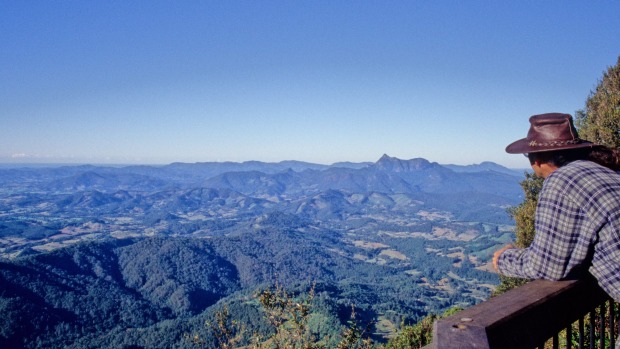
The rainforest is closing in. Gnarled tentacles creep at the roadside and a gauntlet of tree trunks converges, weaving a fisherman's net of foliage overhead that snuffs out the fading daylight. This is what it must feel like to be in the clutches of a strangler fig – prolific in these parts – only the fig's modus operandi is strangulation by stealth, over decades, whereas the forest here is advancing fast.
The drive into Lamington National Park is best tackled before dark. At sundown, the winding, narrow gravel road is reclaimed by the wilderness, an immense, ancient ecosystem whose origins predate human existence by a few hundred million years. People have always been outclassed by Lamington, a biodiversity colossus that is part of the Gondwana Rainforests, which extend from northern NSW to south-east Queensland, and include the most extensive areas of subtropical rainforest in the world.
The O'Reilly family – five brothers and three cousins – were the first to try to tame these wild lands. Arriving in 1911 to try their luck at dairy farming, they were up against an unyielding environment not wont to human interference. It was a tough existence clearing swaths of forest by hand and carting cream down the mountain on horseback, and in 1915, when the area was declared a national park, the O'Reillys found themselves in the unusual predicament of owning a parcel of land in the middle of a protected reserve. Already the area was proving popular with tourists, who would make the two-day journey from Brisbane by train, carriage and horseback, staying in the family's cabins. And so, in 1926, the O'Reillys formalised their foray in the tourist trade, opening a guesthouse – which continues to welcome visitors almost 90 years on – and becoming unlikely custodians of the land.
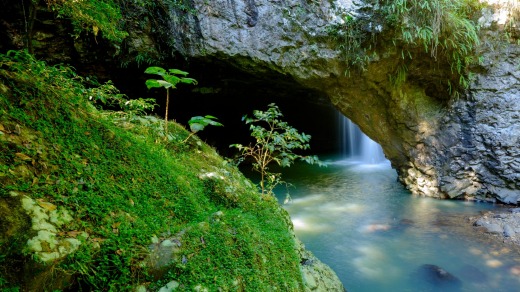
The appeal of Lamington and the broader Gold Coast hinterland is timeless: hundreds of waterfalls, dramatic cliffs and caves, 5000-year-old Antarctic beech trees, hundreds of kilometres of bushwalking tracks, and abundant birdlife. The region is, quite literally, a breath of fresh air after a stint on the Gold Coast – thick with skyscrapers and wall-to-wall resorts – yet few make it beyond the cafes and boutiques of Mount Tamborine, if at all.
Ninety minutes' drive from Surfers Paradise, O'Reilly's Rainforest Retreat, on top of Green Mountains, lives up to its name. Brush turkeys and pademelons (small wallaby-like marsupials) roam the grounds, lyrebirds forage in the undergrowth, parrots, bowerbirds and currawongs flit in the treetops, and buildings give way to sweeping vistas across the McPherson Range. One morning I trek to Morans Falls, descending into the rainforest past towering booyongs, figs and brush box to a viewing platform looking out over the cascades. Above the falls is a small picnic area and the site of the O'Reilly brothers' first bark hut.
Closer to the retreat, the Tree Top Walk – reputedly the first of its kind in Australia – is a gentle meander across nine suspension bridges that climb up to 16 metres above the forest floor. For canopy views, a series of ladders leads to two observation decks built around a massive strangler fig. The highest is 30 metres and provides a mesmerising bird's-eye view of the rainforest.
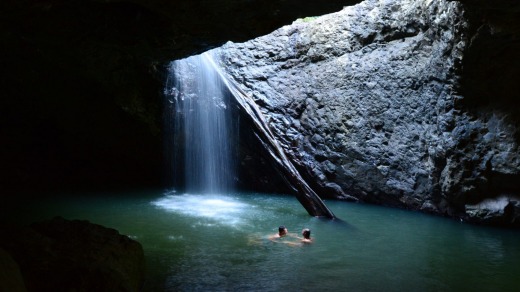
Some of the best views can be had only at night. One evening I join a glow-worm tour, travelling by a four-wheel-drive minibus and then walking by torchlight 800 metres into the forest to a small creek fringed by a rock overhang. We are instructed to turn off our lights as we approach, and soon the darkness is transformed into a curtain of glimmering stars. The glow-worms (actually maggots of a mosquito-like fly) have bioluminescent tail lights, which they use to lure insects into their sticky snare. As the minutes pass, my eyes adjust and more and more tiny lights appear. It's like stargazing, only staring horizontally instead of skyward, and the lights appear much closer than a galaxy far, far away.
Lamington is one of the few places in Australia where glow-worms can be viewed year-round. They can also be found in neighbouring Springbrook National Park at Natural Bridge, a rock arch formed by the force of a waterfall tumbling over a basalt cave. The Springbrook plateau was created by a massive volcanic eruption about 23 million years ago, and the landscape still bears the scars of violent geological forces. Nowhere is this more visible than at Canyon Lookout, where layers of lava flows are discernible in the cliff faces that drop away spectacularly into the verdant basin below. Silver threads of water stream silently over the precipice, appearing motionless, as though licked with the stroke of an artist's brush.
Seeking out the waterfall, I drive south for a few minutes, arriving at Goomoolahra Picnic Ground, a cool, shaded reserve set by a softly flowing creek. Traversing the rocky bank, I follow the watercourse; the creek builds from a gentle trickle to a gushing torrent and bursts over the escarpment, disappearing from view.
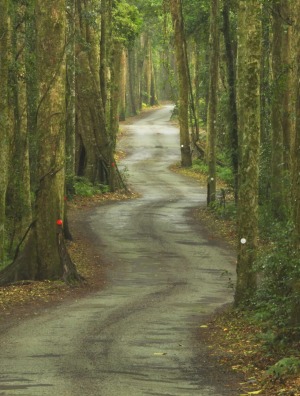
At the southernmost point of the plateau rim, a stone's throw from the New South Wales border, is the Best of All Lookout. Indeed, I may have saved the best for last. A 15-minute walk meanders through Gondwana Rainforest, past ancient Antarctic beech trees with enormous bulbous green roots that resemble an ogre's cankles. A cool breeze drifts across the path and the mountain is plunged in mist. When I arrive at the lookout there's little to see, save for a screen of clouds daubed in 50 shades of grey, and the occasional flicker of green.
The clouds shift in the wind, as though pulled by invisible puppet strings, and a funnel of light spills colour onto the vast valley below – a patchwork of green, brown and golden hues that folds into the distant, grey city skyline. From here, I can see across the border into New South Wales to Mount Warning – once a volcanic plug at the centre of the fiery caldera – and on to Byron Bay.
Soon the view disappears behind drifting cloud, as though erased on an Etch A Sketch. On the walk back to the car park, mist envelops the path and it starts to rain. Thick drops fall from overhanging branches, and plants – drained of colour in the gloom – claw at the path. Nature is again closing in.
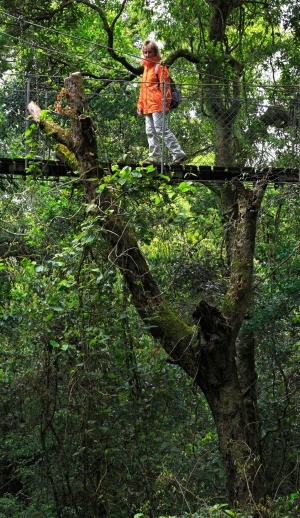
MORE INFORMATION
queensland.com/GoldCoast
GETTING THERE
Qantas, Jetstar, Virgin Australia and Tiger Air fly to the Gold Coast from Sydney from about $100 return, and from Melbourne from about $180 return. Hire cars are available at the airport.
STAYING THERE
O'Reilly's Rainforest Retreat, on the top of Green Mountains, offers motel-style accommodation as well as two and three-bedroom self-contained villas with sweeping views across the valley. There is a restaurant, cafe, gift shop and small store on site, and a tour and activities booking office. Motel-style rooms from $149 a night, two-bedroom rainforest view villas cost from $360 a night. night, See oreillys.com.au.